A Day Full of Backyard Critters
Posted: May 13, 2024 Filed under: Gardening | Tags: Gulf Coast gardening, nature photography, Hummingbird, Box Turtles, Brown Anole, backkyard critters 7 Comments
I came upon my turtle friend on my morning round through the yard. We had a nice little chat and the turtle is comfortable enough with me that it doesn’t retreat into its shell.
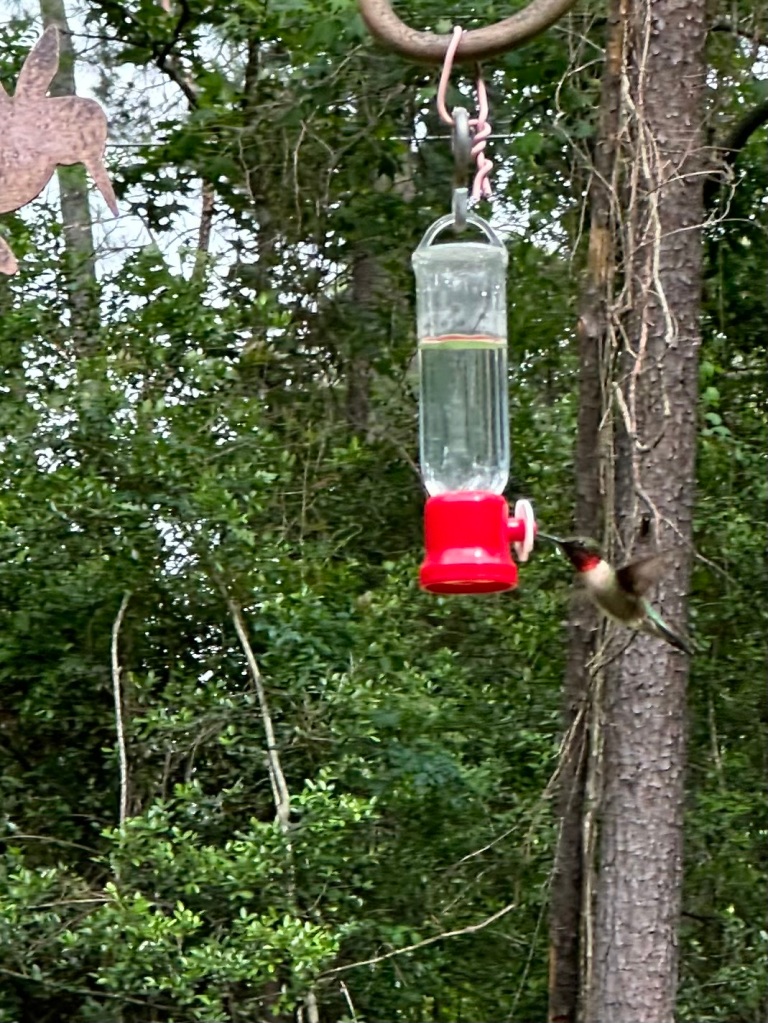
The hummingbird was taking turns feeding from the sugar water and flowers.

A brown Cuban anole enjoyed the day sunning on some yard art.

The best part of the day came during my afternoon tour of the yard. I found a baby box turtle scurrying away from me.

I could not resist picking up the little cutie and getting some photos wondering if my turtle friend could be its mother.

As much as I wanted to keep the baby turtle, I knew it would be better to let it go. I put it back where I found it and prayed that the baby turtle would be safe in this treacherous world.
What Do You Get With 14 Inches of Rain?
Posted: May 11, 2024 Filed under: Gardening | Tags: Automatic Gardening, Gulf Coast gardening, Rain Lilies, Zephyranthes 13 Comments
Our man-made lake that dams up a river came out of its banks after 14 inches of rain over a couple of days. Luckily, the lake did not reach any of the houses and the streets acted as designed to become streams to keep the water from houses. A bench and trash can are in the water where the path was covered.

And what do you get with rain? Rain Lilies of course.

These quirky flowers will only bloom with rainwater. Above is one that developed as a double.

The Rain Lilies or Zephyranthes are reproduced by offsets and seeds. I find them all over my yard and even in flower pots.
Amaryllis
Posted: May 9, 2024 Filed under: Gardening | Tags: Amaryllis, Automatic Gardening, Gulf Coast gardening, Year-round gardening 12 Comments
Most of the Amaryllis I have planted in the garden have stopped blooming. They send up leaves, but no flowers.

This one, which was tagged Specialty Amaryllis “Fairytale”, has been blooming for several years and usually, the “fancy” ones are the weakest. Not only did it make four gorgeous flowers, but it also sent up another bud.

When the first flower stalk was finished, I had four more Fairytale candy-stripped flowers for a couple more weeks.
A Day of Beautiful Scents
Posted: May 7, 2024 Filed under: Gluten Free | Tags: Gardenia, Gulf Coast gardening, Little Gem Magnolia, Passionflower, Southern Gardening 8 Comments
Flowers with the sweetest scent are in bloom at this time of year. It is a pleasure to walk around the yard being greeted by beautiful fragrances.


The old Gardenia is doing surprisingly well after many of its old trunks gave out and had to be pruned. I was so pleased to see it come back.

Even the Purple Passionflower is having an early bloom with its lemony aroma.

It is the time for the Magnolia to shine with big scented flowers. This is a Little Gem which is a great size for a suburban yard.
Acorn Mast Aftermath
Posted: April 24, 2024 Filed under: Gardening | Tags: acorn mast, Automatic Gardening, Gulf Coast gardening, oak tree, Southern Gardening 8 Comments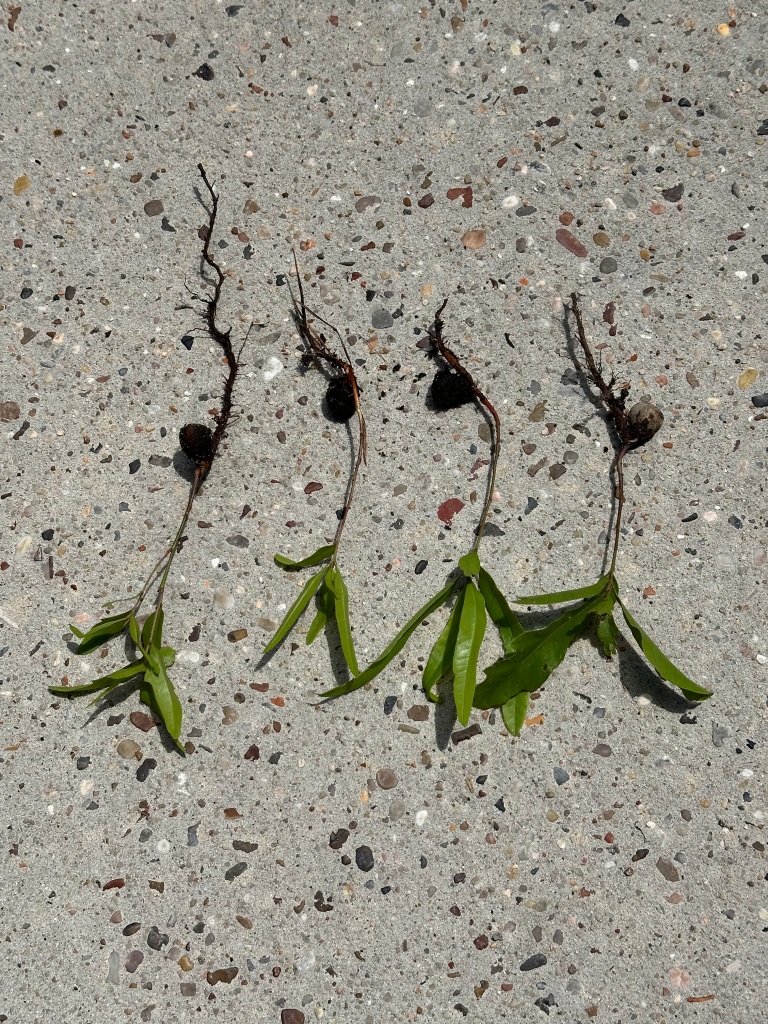
I had a post about the oak trees having an acorn mast. I was correct in predicting I would be pulling up many young oak trees. The squirrels have been very helpful burying them in the garden beds and lawn. I have replanted a few and I let the ones growing in appropriate areas alone. Time will tell if any grow into a mighty oak tree.
All is Right in the World
Posted: April 22, 2024 Filed under: Gardening | Tags: Amaryllis, Automatic Gardening, Caterpillar, Gulf Coast gardening, Hummingbird, Southern Gardening, Subtropical Gardening 18 Comments
At last, the garden beds are full and bursting with color.
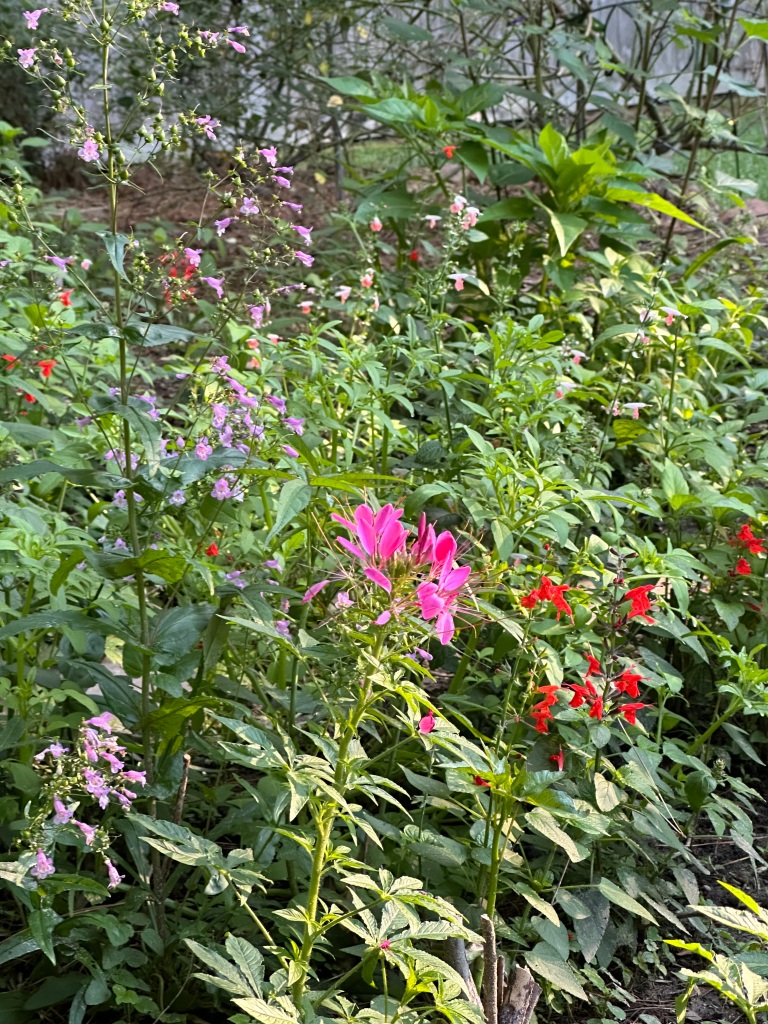
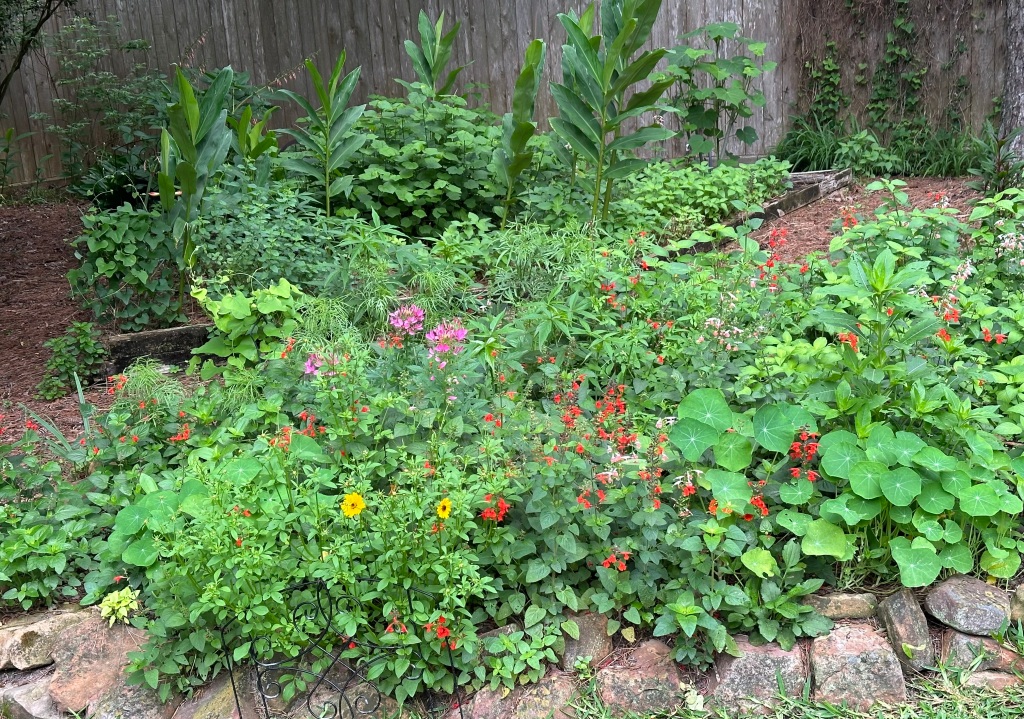
Many of these flowers would have been blooming earlier but were knocked back by freezing weather.
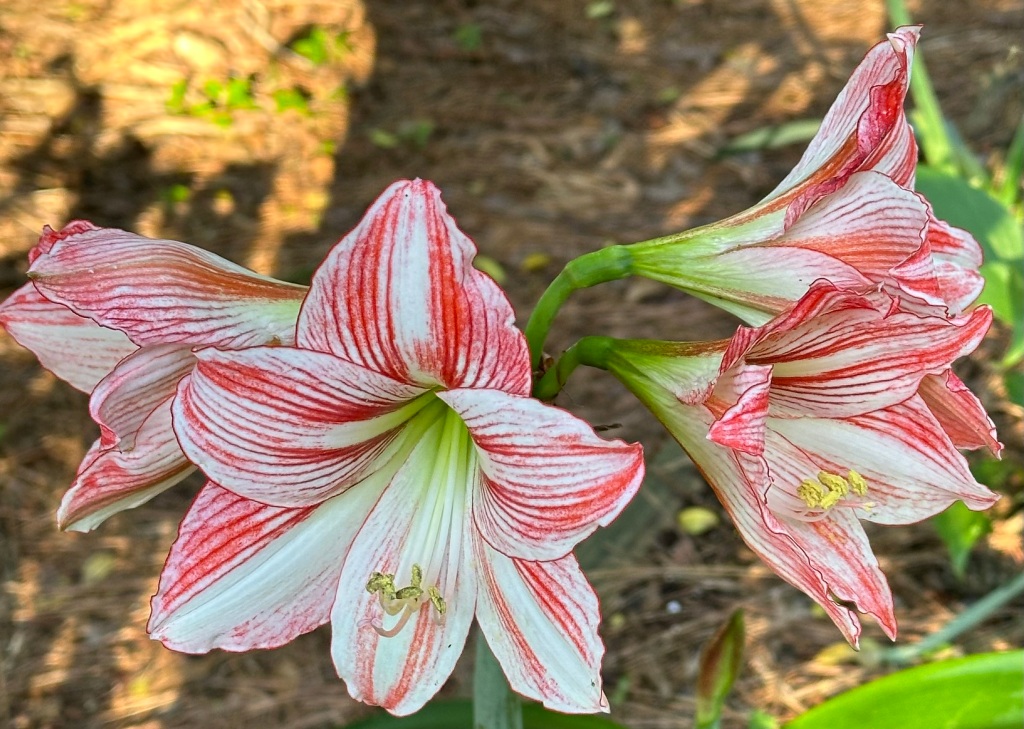
Thankfully, the Amaryrillias bulb did not turn to mush and it put on a beautiful display. A second stem with buds is coming up.
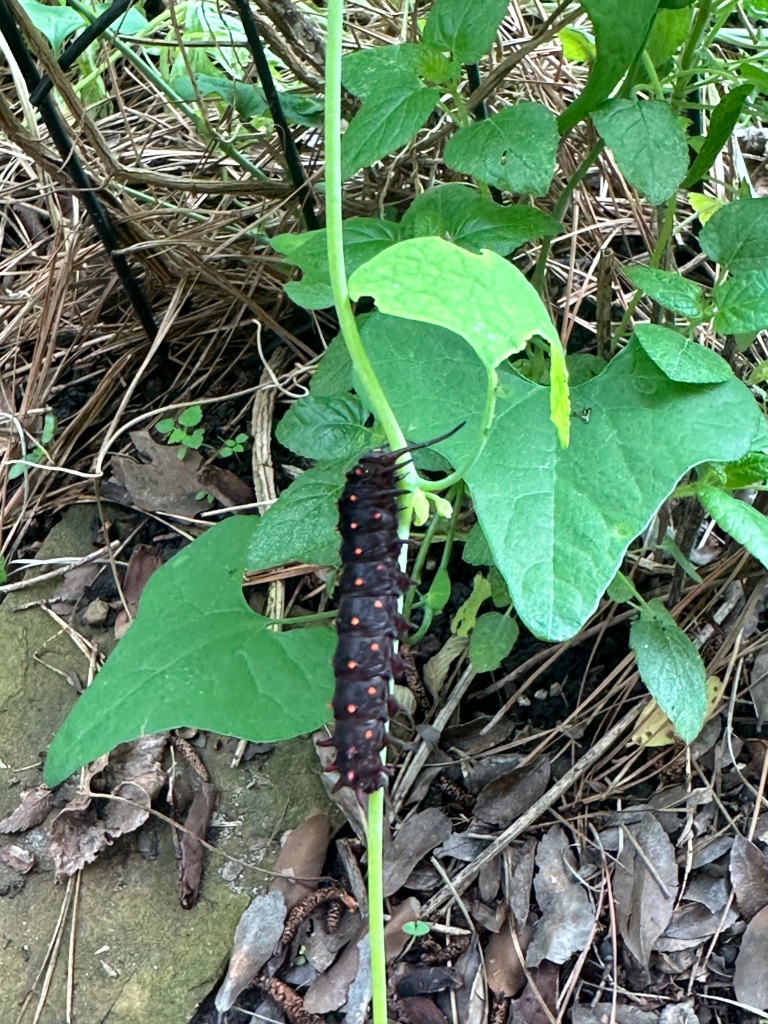

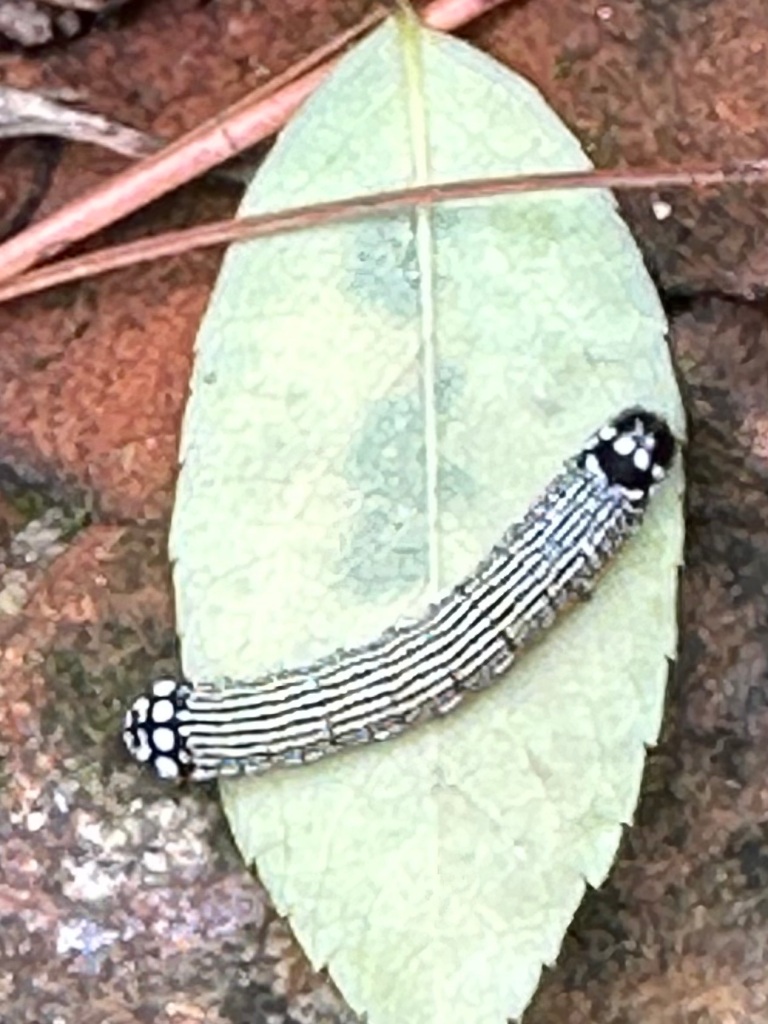
A variety of caterpillars have hatched.

And the hummingbirds have come back. All is right in my backyard world.
Yesterday, Today and Tomorrow
Posted: April 8, 2024 Filed under: Gardening | Tags: Brunfelsia pauciflora, Yesterday Today & Tomorrow 22 Comments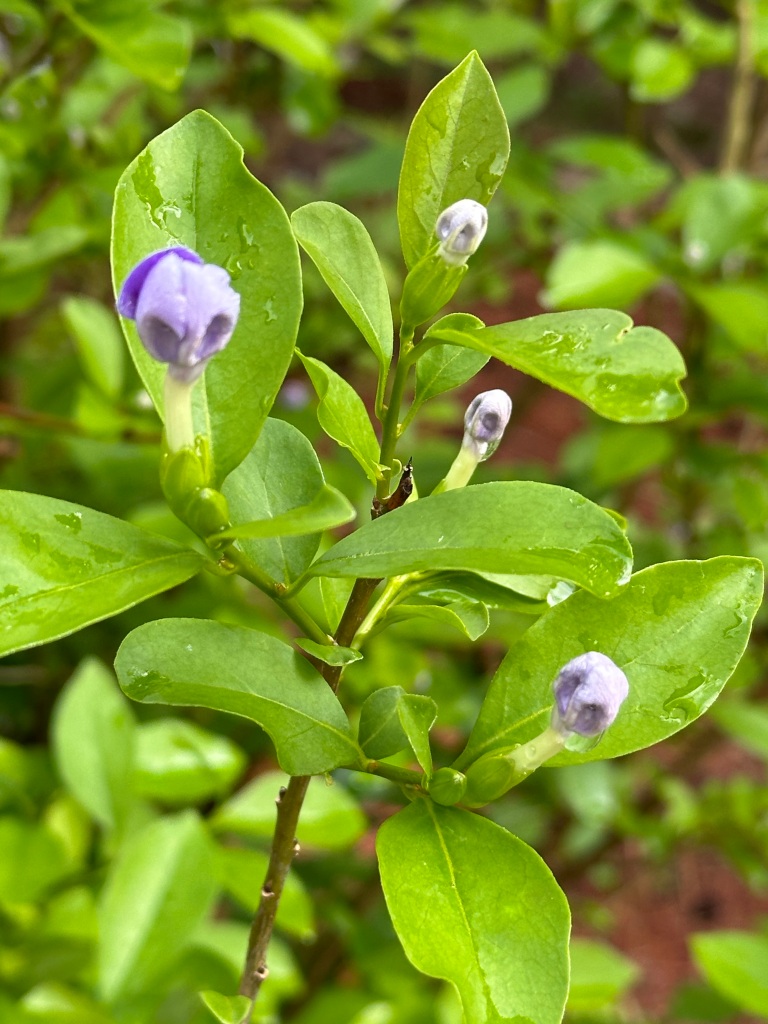
My Yesterday, Today and Tomorrow shrub is blooming. I guess the bud stage is the prequel.
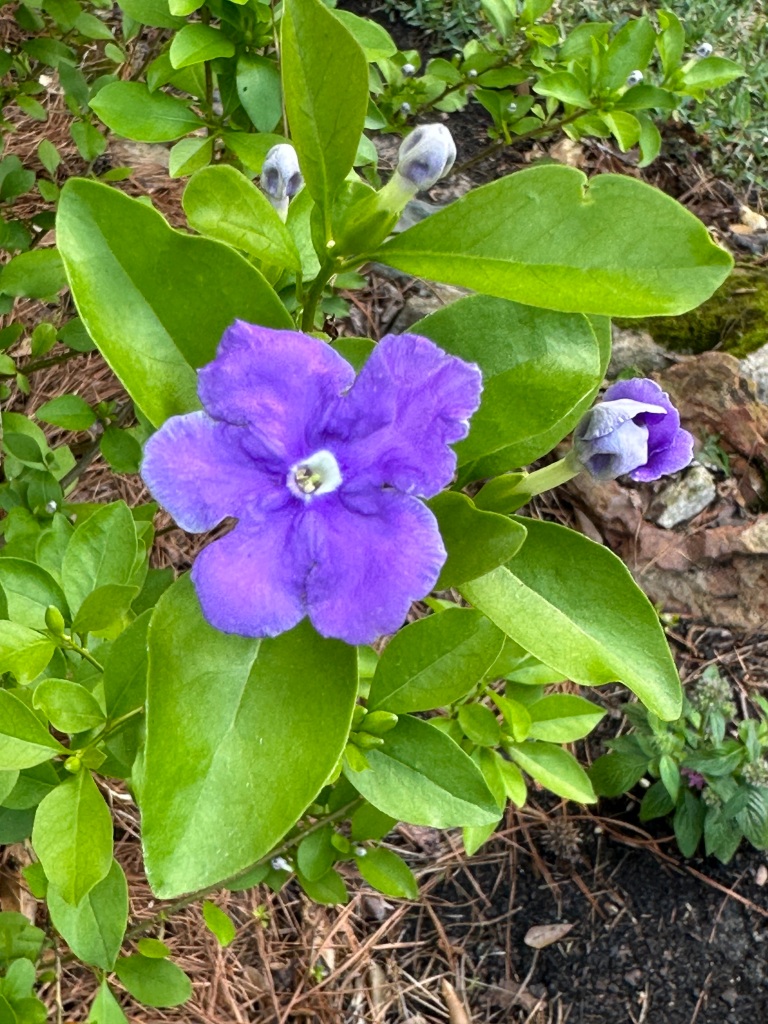
On the first day, it is purple.
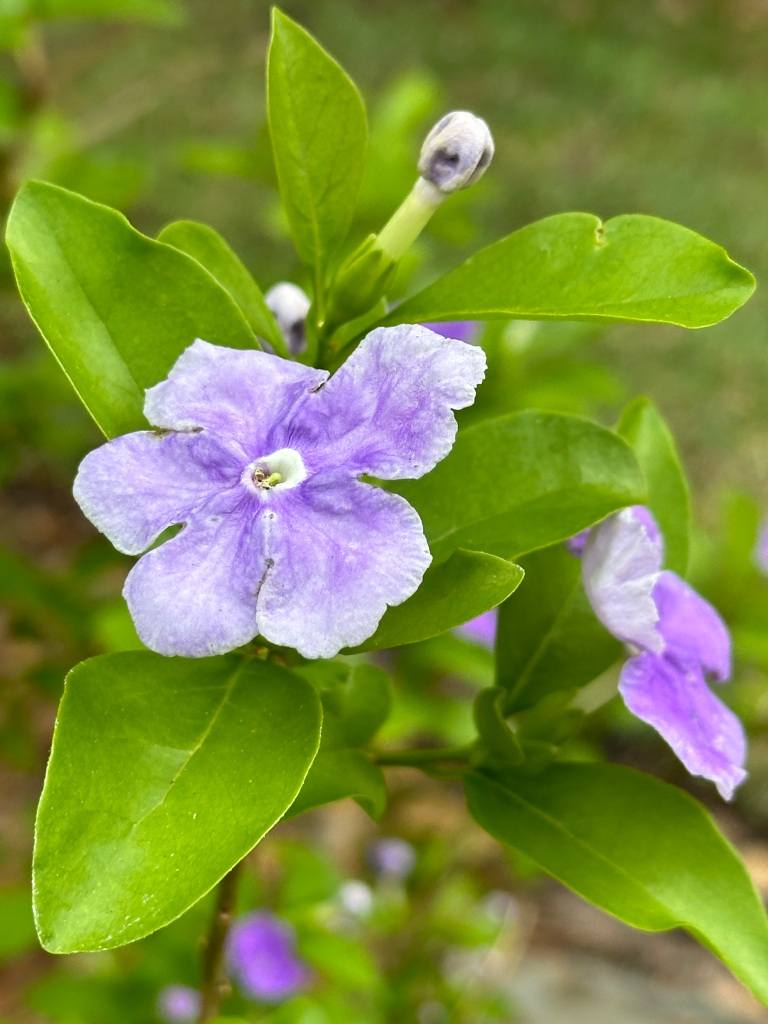
The second day it becomes lavendar.

And on the third day, it fades to white.
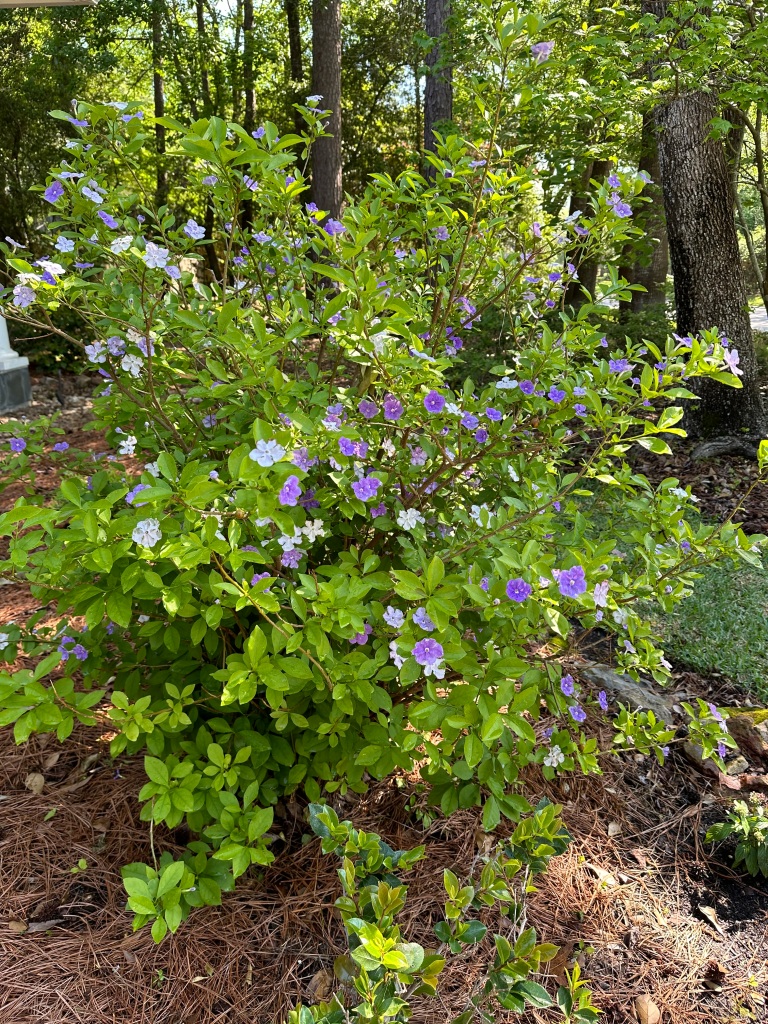
All together the flowers make an interesting flowering shrub. It is a spring bloomer and its scent is hard to describe, but I feel it is an acquired scent you need to get used to.
A Heavenly Scent
Posted: April 6, 2024 Filed under: Gardening | Tags: Gulf Coast gardening, Honeysuckle, Lonicera japonica, Scents, Southern Gardening 13 Comments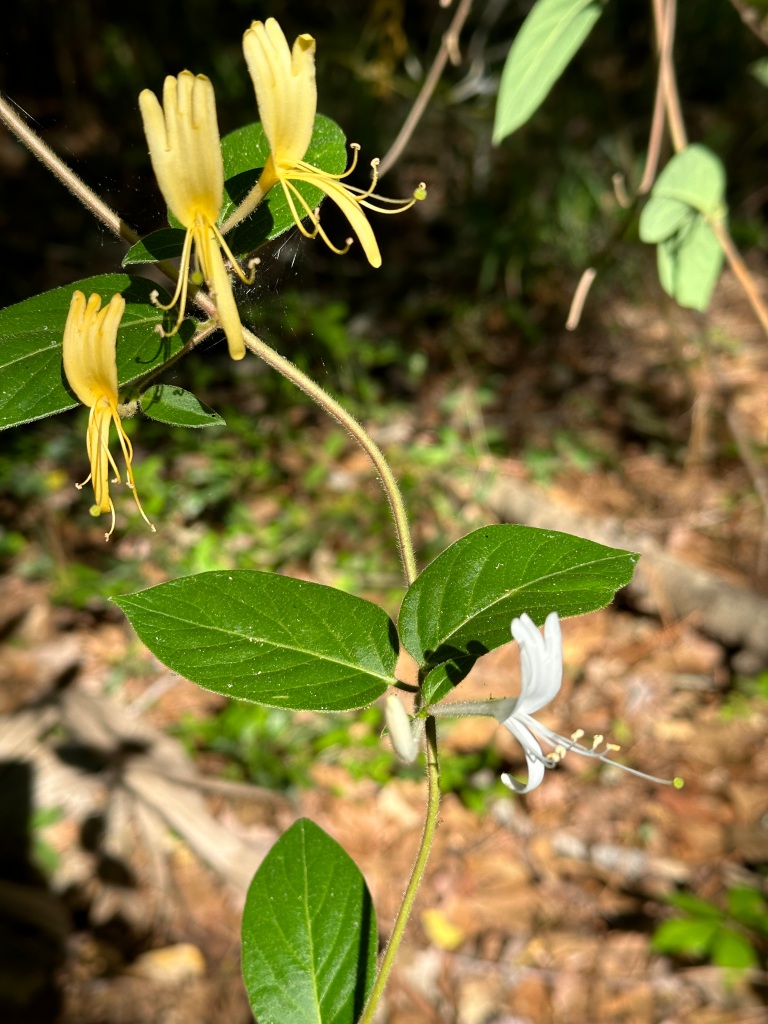
On my morning walk through the garden I smelled a heady scent. I checked out my usual blooming trees, but it wasn’t any of them. I opened the back gate to the natural area and found Honeysuckle right at eye level and sure enough that was the source of the aromatic fragrance. I believe this is Lonicera japonica or Southern Honeysuckle. Like so many plants, it is not native here originally from Japan, and has become invasive. I am going by the policy “not in my backyard” and enjoy the wonderfully scented vine in the natural area, which is not allowed to be altered.
Finally Flowers!
Posted: April 1, 2024 Filed under: Gardening | Tags: African Hosta, Automatic Gardening, cannas, Drimiopsis maculata, Gulf Coast gardening, Gulf Coast Penstemon, Little White Soldiers, purple Oxalis, Year-round gardening 27 Comments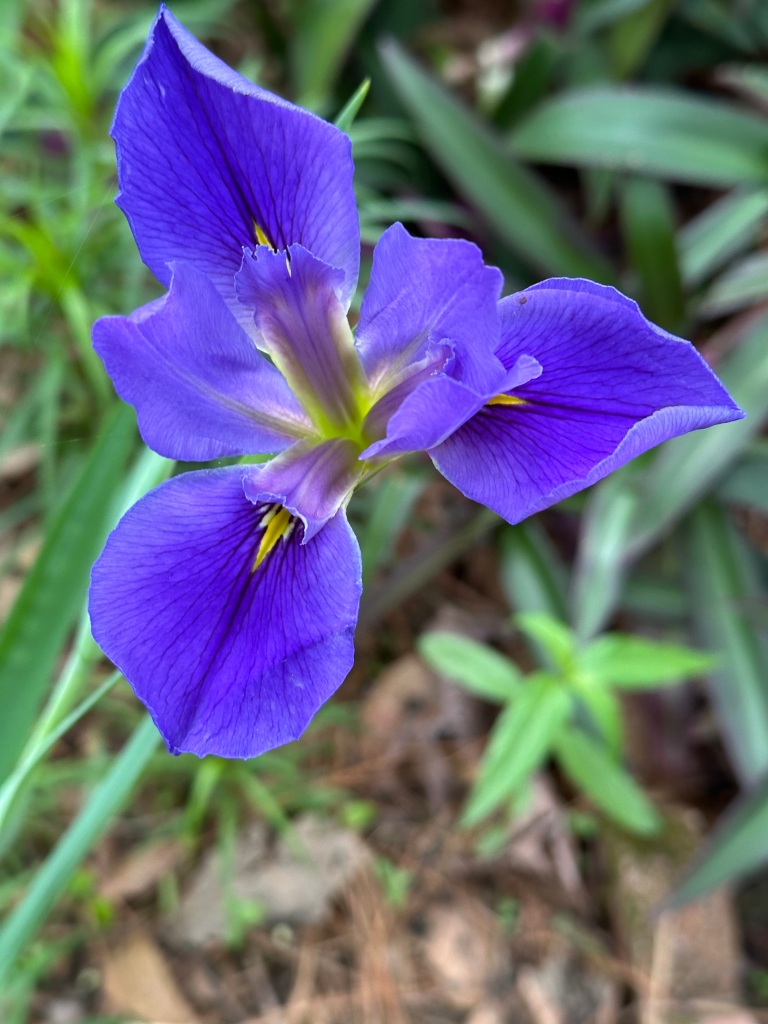
I’ve been slightly jealous of my northern gardener friends’ pictures of daffodils, forsythia, hellebore, and other early bloomers. My plants are finally coming back from the freeze and there are a few in bloom. Above is my “mulch pile” Iris. The Iris arrived in a mulch delivery over 30 years ago and proved to be very hardy. It has managed to reproduce too.

White Soldiers or Drimiopsis maculata is a great plant for this area. It is reliable and spreads. The flowers are not that exciting and after the bloom, they will make bulblets and new plants. They are also called African Hosta and are the closest to a Hosta we can grow here.

One of Cannas has bloomed already. Another plant that reproduces easily.
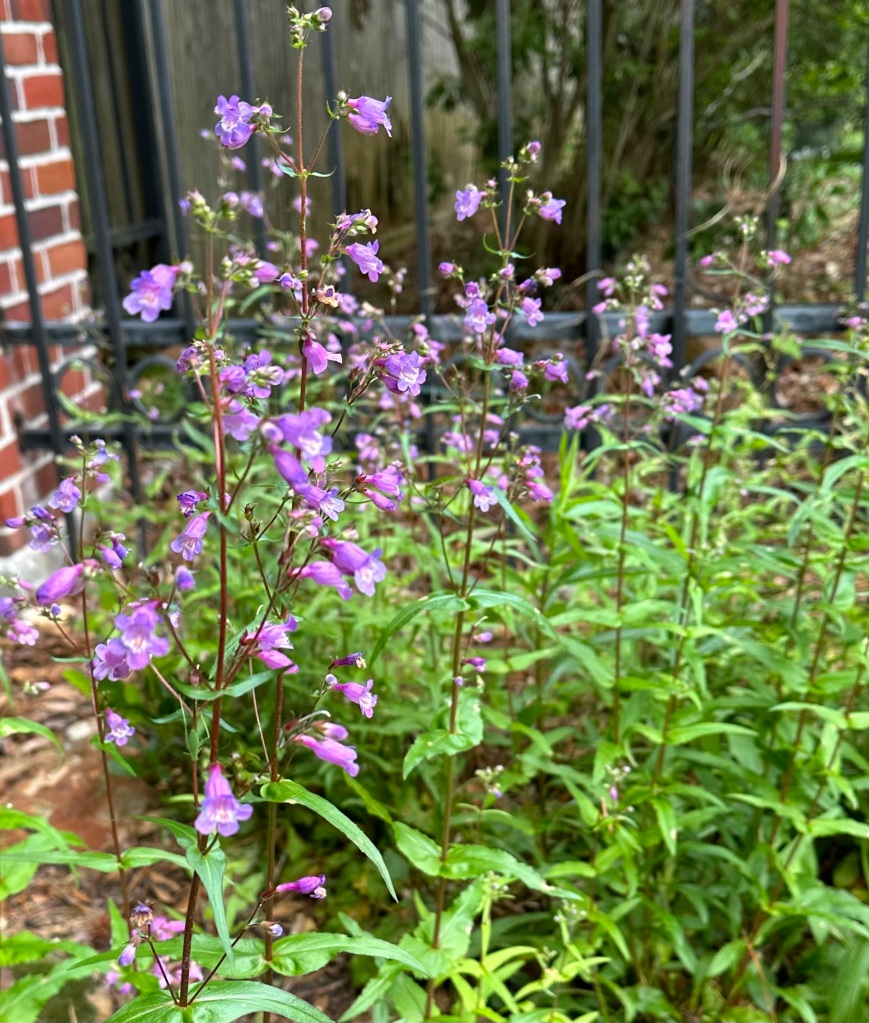
The Gulf Coast Penstemon is really putting on a show. The only thing is that I did not plant them in this bed.
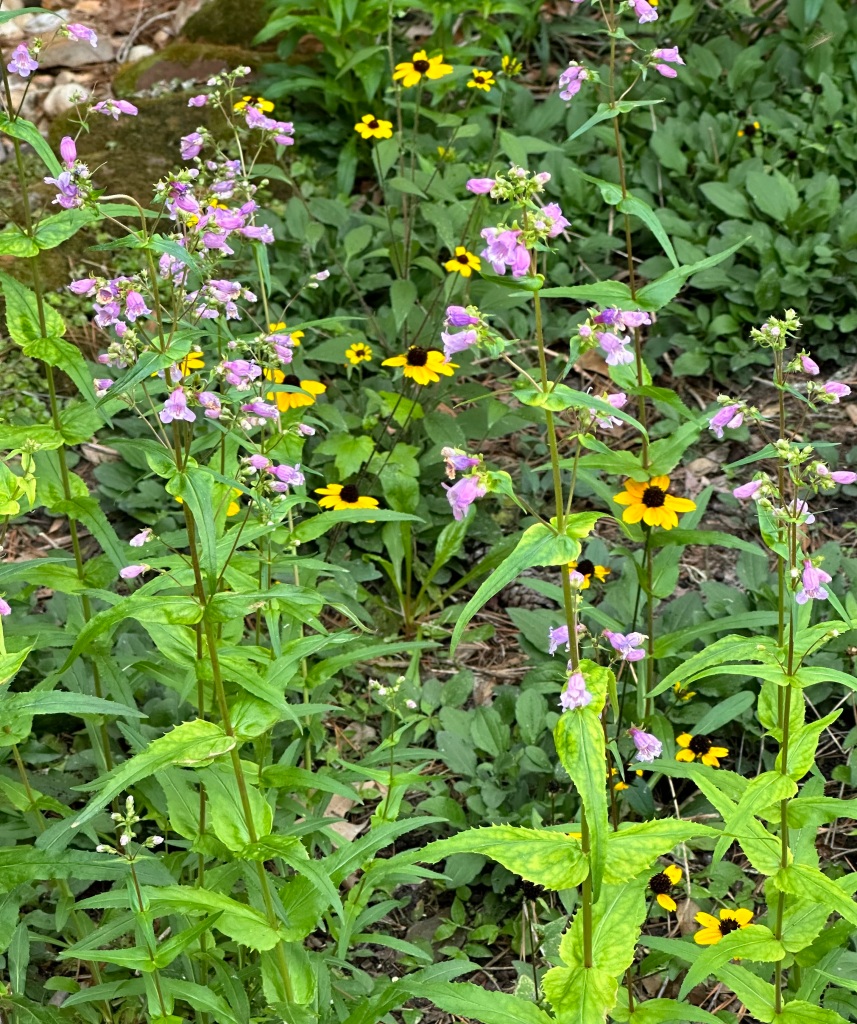
Black-eyed Susans have also started to flower and make a nice spring mix with the Gulf Coast Penstemon.
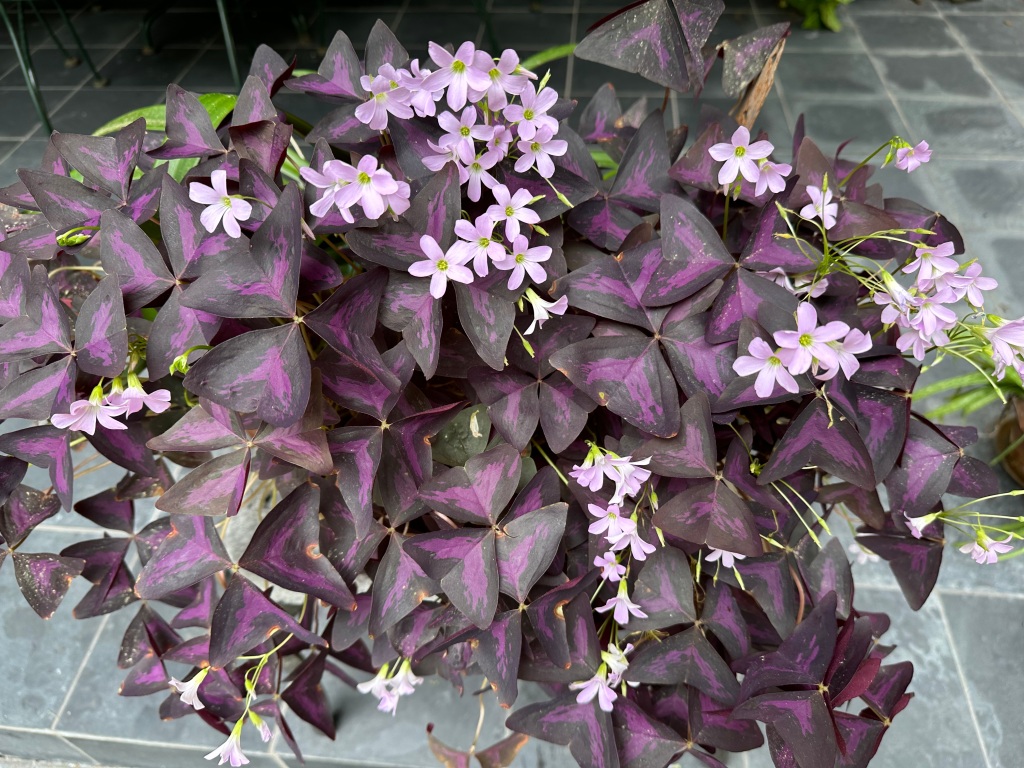
The Purple Oxalis is having a very happy spring. These are in two pots I have next to each other and they make a great display. I also have the Oxalis in two beds and they always come back every year.




